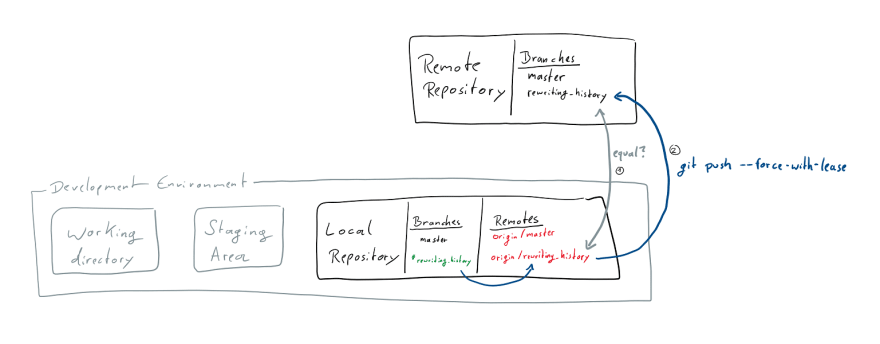

I conclude that on a rare occasion when a force push is needed, opening Terminal won't hurt. source tree checked out initially and then just wanted to make sure that. I've never done a force push since -new-branch was introduced, and never needed it to combine unrelated repositories or push a two-headed branch (a force pull is much safer). My issue is when I attempt a force push afterwards, I see my remotes have been lost. I agree with that this option is more dangerous than useful.
FORCE PUSH SOURCETREE WINDOWS
I wasn't able to find a way to do a hg push -force proper via the SourceTree dialogs. 4 Answers Sorted by: 533 Here are the steps to edit the commit message of a previous commit ( which is not the most recent commit) using SourceTree for Windows version 1.5.2.0: Step 1 Select the commit immediately before the commit that you want to edit. You can, optionally, specify a branch you want to push if you have outgoing changesets on several branches. 1.4.2) issues a hg push -new-branch as needed, so if you create a new branch (as opposed to having two heads on one branch), you just do a regular push ( Repository → Push). Tools -> Options -> Git -> Enable Force PushĪfter that, you can force push it using push button in toolbar: IMPORTANT: To force a push TO ONLY ONE BRANCH ( ), use a + in front of it to push.In SourceTree version 2.5.5.0 there is an option for that. This configuration file after being saved will be executed as a batch by git.ĮXAMPLE git push origin +some_branch_name Keep the oldest commit (it will appear first) as "pick" and the others in sequence change to "squash". Dont forget to push your tags with git push origin -tags. When committing a missing file in selected files mode, should behave like the.


Keep only the commits (hash) shown by the "List all branch commit." command. To force you not to end up in performance and/or other issues, this template. Force push checkbox now sticks to the bottom left of the push sheet. NOTE: The means the number of commits you are going to merge (rebase) - that is, the number of commits displayed by the "List all specifc branch commits" command - and -i means interactive mode.Ī text editor will open. The rebase is basically a "merge" of commits.ĮXAMPLE git rebase -i origin/some_branch_name~2 some_branch_name TIP: This process is important for organizing and ensuring that all changes made in one branch can be brought over to another branch in a cherry pick process if this is the scenario. If there is more than one commit in the created branch, perform a rebase to centralize everything in just one commit. Merge (rebase) commits in a specifc branch List all specifc branch commitsĮXAMPLE git cherry -v main some_branch_name In front of the refspec to push (e.g git push origin +master to force SourceTree Create A Bitbucket Account SourceTreeAccess Tokens.
FORCE PUSH SOURCETREE CODE
Select the remote branch to pull changes from. remote: GitLab: You are not allowed to force push code to a protected. Select the remote repository to pull from. Select 'Reset current branch to this commit.' In the resulting dialog, select 'Mixed.' from the drop down and click OK. Right click on the last 'good' commit (this will probably be origin/master ). Select the local branch to push and the remote branch to push to. To remove the commit without changing any source code, you need to perform a 'mixed' reset. To force a push to only one branch, use a + Push changes from a local repository to a remote repository. Than the current branch (including local refs that are strictly behind It with fault set to matching or with multiple pushĭestinations configured with remote.*.push may overwrite refs other Note that -force applies to all the refs that are pushed, hence using You will than need to push again with the -f flag.Īnd then force push with : git push origin +master This appears to have properly pushed the commits into Gerrit for me. Comment the ones you are not interested in (in other words, leave the commit message that will correspond to this squashing uncommented). Click on the remote branch name under the 'Remote Branch' column (mine is presently 'master') Type in the new remo branch name - which would be 'refs/for/master' for me. This is possible to do using Sourcetree, right clicking in the commit that you want to revert, and selecting 'Reverse commit.'. Save this file.Īfterwards, your editor will open again, showing the messages of each commit. When you push a commit, the safest way to revert it (rather than forcing the push with -f) is to use the revert function, so a new commit is created on top of your previous commit. The first line (which corresponds to the newest commit) should be left with pick. Here, replace pick in the second, third, and fourth lines (since you are interested in the last 4 commits) with squash. Squash commits locally with: git rebase -i origin/master~4 master


 0 kommentar(er)
0 kommentar(er)
